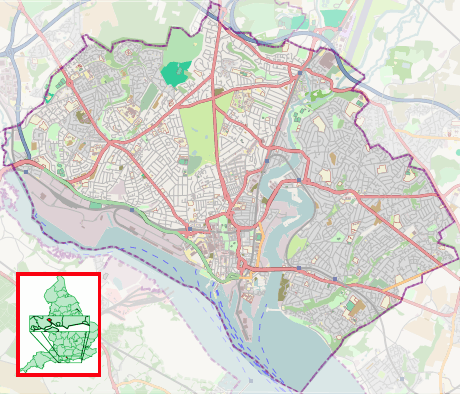Southampton Common
| Southampton Common | |
|---|---|
|
Southampton Common, January 2005 | |
 Shown within Southampton | |
| Type | Common land / Public park |
| Location | Southampton |
| Coordinates | 50°55′34″N 1°24′39″W / 50.9262°N 1.4109°WCoordinates: 50°55′34″N 1°24′39″W / 50.9262°N 1.4109°W |
| Area | 326 acres (1.32 km2) |
| Created |
13th century as common land 1844 as public park |
| Operated by | Southampton City Council |
| Open | All year |
| Status |
Green Flag Award Site of Special Scientific Interest |
Southampton Common is a large open space to the north of the city centre of Southampton, England. It is bounded by the districts of Shirley, Bassett, Highfield and Portswood. The area supports a large variety of wildlife, including the largest recorded population of the internationally rare great crested newt. It is designated a Site of Special Scientific Interest.
Southampton Common currently includes 326 acres (1.32 km2) of woodland, parkland, rough grassland, ponds, wetlands, nature trails, a paddling pool, a children's play area, a model yachting pond, and a fishing lake. The Common is used for a wide variety of community events, Flower Festival, Race for life Cancer Research UK and formerly 'Power in the Park' hosted by Power FM.
The Hawthorns Urban Wildlife Centre at the southern end has been built on the former site of Southampton Zoo and the comprehensive displays document the natural history of the area; with interactive resources, educational facilities and information about local wildlife and environmental management. To the west, bordering on Hill Lane, is a historic cemetery that also includes many rare flora and fauna. Cemetery Pond is popular for birds.
The south east of the Common includes an open air paddling pool that has recently been refurbished and a play area for children. This is located near to a car parking zone and the Cowherds Inn, a local landmark which has a history going back to the 17th century.
The Common is also a venue for a Parkrun; a weekly 5 km run on a Saturday morning starting from near the Hawthorns Centre.[1]
History
The history of Southampton Common can be traced back to a dispute over land rights in the 13th century, which was resolved by the Borough purchasing the land and declaring it common land. It became a public park in 1844.
The designation as Common Land allowed neighbours to use the land for fuel, clay, and taking berries and other wild, natural food. The most important use was for grazing, however, and there was a cowherd who was paid to be responsible for the cattle on the common. He was given accommodation in an inn on the site of today's Cowherds pub.
In 1961 the one and a quarter acres Southampton zoo was opened on the common.[2] Poor conditions at the zoo lead to protests in the early 80s including a march to Hoglands Park.[2] As a result the zoo closed in 1985.[2]
References
- ↑ http://www.parkrun.org.uk/southampton/
- 1 2 3 Gale, Jez. "The beasts that brought Southampton to life". Southern Daily Echo. Retrieved 14 Jul 2015.
Further reading
- City of Winchester Society. Southampton Common: Its Place in the Life of Southampton Over the Centuries. [Southampton] ([c/o The Secretary, 3 River Walk, Townhill Park, Southampton]): The Society, 1979.
External links
- English Nature link to details of the SSSI designation
- Sothampton city council page on common
- Visit southampton page on common
| Wikimedia Commons has media related to Southampton Common. |
